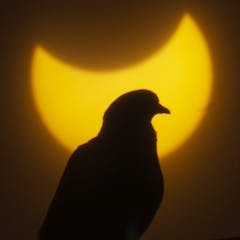
Articles on Citizen science
Displaying 1 - 20 of 170 articles

Where specialized algorithms fail to classify star-borne pulses, human volunteers with just a little training can step in.

Since an eclipse only lasts a few minutes, you need more than just a handful of scientists running around collecting data on bird activity. That’s where a new app comes in.

Bushwalkers with smartphones could help scientists track a fungus lethal to many of Australia’s most loved trees.

Egg cases of sharks and rays can be found washed up on the shore. Citizen science data helps scientists understand the life cycles of these marine animals and how to best conserve them.

In South Africa, a group of citizen scientists who test water quality and log the results on a specialised app have helped keep the water supply for 4.3 million people clean.

Australia could still take action in the fight against Varroa that wasn’t possible elsewhere. But to do so, we need to fill urgent gaps in bee research.

After scientists’ GPS tracking tag was violently removed from one shark’s dorsal fin, they were in for a surprise: The wound didn’t just heal, but the missing tissue grew back.

With smartphones as commonplace as towels and sunscreen in the beach bag, why not add coastal data collection to your list of holiday activities this summer? Look for the CoastSnap camera cradles.

For a project on identifying lead water pipes in homes, outreach through partner groups produced a more representative set of volunteers.

Researchers used ‘citizen science’ birdwatching data to rank Australian species. Among the most elusive birds were ‘hide and seek’ champions and a few possibly headed for extinction.

Contributors to the WomSAT website have already reported more than 23,000 wombat sightings. We can use the data to cut the risks to wombats – and anyone with a smartphone can help.

Citizen science is coming of age. The data are pouring in from observations by naturalists and birders.

Riverside communities in the Pantanal make sustainable use of natural resources within an unpredictable system.

Turtles could spell trouble for Western Sydney Airport, which is being built in a wetland. But it’s not too late to include turtle-friendly infrastructure such as underpasses and fences.

Mae gwyddoniaeth dinasyddion yn cynnig y posibilrwydd o wyddoniaeth i'r bobl, gan y bobl.

Publicly available data on social media opens a new avenue for studying the environment with “incidental citizen science”.

One of the most damaging invasive species in the oceans has breached a major barrier – the Amazon-Orinoco river plume – and is spreading along Brazil’s coast. Scientists are trying to catch up.

Citizen science offers the possibility of a science for the people, by the people. And it could be used to challenge the status quo.

The first comprehensive audit of marine life around Australia, deploying an army of volunteer research divers alongside scientists, has revealed southern reefs are suffering the most.

Invasive species cause billions of dollars in damage across the US every year. Hikers and backpackers can take simple steps to avoid spreading seeds and making the problem worse.





